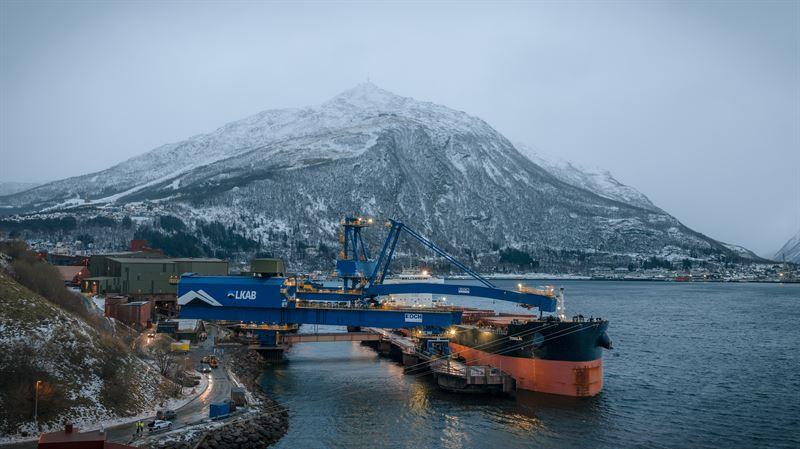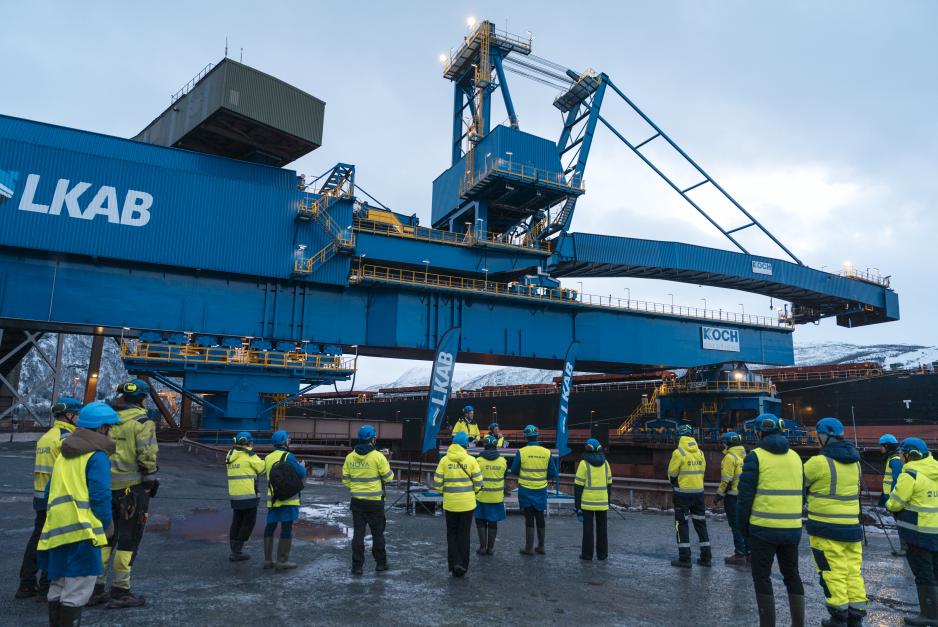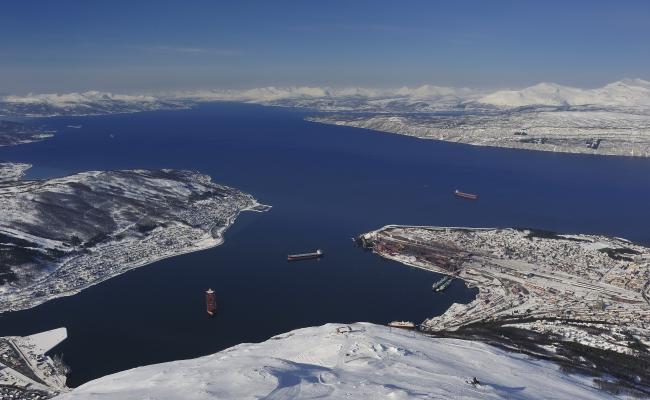LKAB Strengthens Logistics in the North with a New Ship Loader in the Port of Narvik

LKAB's new ship loader in the port of Narvik. The ship loader will strenghten the company's logistics system, creating the conditions for long-term operations in the region. (Photo: LKAB).
The Swedish mining company LKAB has inaugurated a new ship loader in the Port of Narvik, Northern Norway, which is of central importance for the company's exports.
The Swedish mining company LKAB's new ship loader in the Port of Narvik, Northern Norway, was officially opened on Thursday this week.
The company's old ship loader was commissioned in 1977, and has reached the end of its technical lifespan, the company states.
The new ship loader is part of a larger investment program of five billion SEK in the port, which the company announced in 2022. The investment program runs until 2029 and includes automated silo systems, a new loader, sifting stations, belt conveyors, unloading stations and a new storage facility for fines.
The purpose is to streamline logistics between mines, the railway and ships.

From the inauguration of LKAB's new port loader in the port of Narvik in Northern Norway. (Photo: LKAB).
A crucial port
LKAB is a Swedish state-owned mining company that extracts iron ore in several places in Norrbotten in Northern Sweden. The company accounts for 80 percent of all iron ore mined in the EU and is Europe's largest iron ore producer.
Most of the iron ore that the company produces is transported via the railway, the Iron Ore Line, which runs through Northern Sweden to Northern Norway, and ends in the ice-free harbor in Narvik.
From here, the products are shipped to global markets, and the port is thus crucial for LKAB's exports.
LKAB's iron ore train in Narvik. The Iron Ore Line, also called the Ofoten Line in Norway, has long been characterized by low capacity, while demand for its use has increased, especially from the business sector. It has long been advocated for the construction of double tracks on the line.(Photo: Hilde Bye / High North News).
Great economic importance
“We see Narvik as a central part of LKAB’s future. The Iron Ore Line and the port of Narvik are of great economic importance for Sweden and a strategically vital transport corridor for all of Europe. What still remains is to increase capacity along the entire Iron Ore Line,” says Jan Moström, CEO of LKAB, in a press release.
The LKAB group had sales of about SEK 33 billion in 2024. The year before, the company delivered a major dividend to the Swedish state of 7.6 billion SEK.
“Our logistics is a competitive factor. Every improvement in the port strengthens our position in the global market. The new loader is enclosed and equipped with modern safety solutions, which is important not least from a work environment perspective. This secures our ability to deliver quickly, safely, and sustainably,” says Marit Waleniussen, CEO of LKAB Norway.
Facts about the port and ship loader in Narvik
- Each year, about 22 million tonnes of iron ore products are shipped from Kiruna and Svappavaara to Narvik for export.
- Transport takes place via the Iron Ore Line (Malmbanen), a critical link in LKAB’s logistics system. Around ten train sets arrive daily, hauled by IORE locomotives with a capacity of up to 8,000 tonnes per train.
- A vessel is normally loaded within 12 to 48 hours, depending on size.
- Narvik’s port is ice-free, enabling year-round exports. The port is also deep and accommodates the largest vessels. Each year, 300 ships call at the port, about 200 of which are loaded with LKAB’s products.
- 99 percent of LKAB’s approximately 200 employees in Narvik live in the municipality.
- The new ship loader complies with CE standards for both external environment and workplace safety. It is optimized for more efficient maintenance and is enclosed, minimizing downtime during servicing.
- The old loader was commissioned in 1977. The large crane that supported the old loader has been retained and renovated so the new loader could be installed in the same location. The old crane rails from the 1970s have also been replaced.
Source: LKAB.



